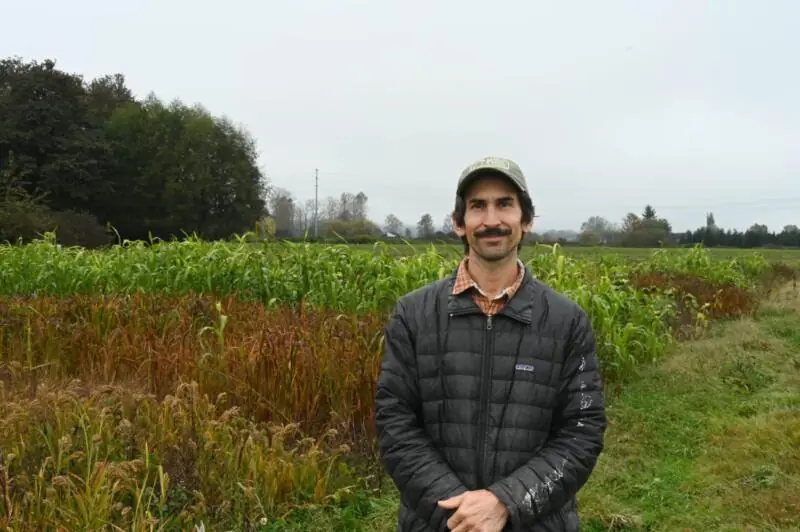Canopy Hot Button report: Fiber giants advance forest-friendly material – Trellis Group

Report on Sustainable Sourcing in the Manmade Cellulosic Fiber Industry
Advancements in Forest Protection and Alignment with SDG 15
A recent report from the non-profit organization Canopy indicates significant progress within the manmade cellulosic fiber (MMCF) sector towards achieving Sustainable Development Goal 15: Life on Land. The 10th Hot Button report reveals a marked decrease in sourcing from ancient and endangered forests by producers of rayon, lyocell, and modal. This shift is a critical step in protecting terrestrial ecosystems and halting biodiversity loss.
Key findings supporting this progress include:
- 70% of MMCF producers now demonstrate green practices that reduce pressure on vital forest ecosystems.
- 54% of producers have achieved Canopy’s favorable “green” rating, a significant increase from zero in 2016.
- The number of apparel lines utilizing next-generation, sustainable MMCF sources has grown from none to 16 over the past decade.
This industry trend, fostered by organizations like Canopy through partnerships with 950 companies, directly contributes to the sustainable management of forests and helps brands make sourcing decisions that align with global conservation goals.
Analysis of Industry Performance and Innovation
Leaders in Sustainable Production and Contribution to SDG 9
Several major producers are leading the industry’s transition towards sustainability, demonstrating a commitment to innovation as outlined in Sustainable Development Goal 9: Industry, Innovation, and Infrastructure. The report identifies top performers based on sourcing, conservation, traceability, and chemical management.
- Lenzing (Austria) & Tangshan Sanyou (China): Tied for the highest rating, these companies represent nearly 22% of global MMCF production and are early adopters of sustainable practices.
- Aditya Birla (India): A supplier of almost 16% of global volume, this company is also recognized for its leadership in forest-friendly sourcing.
These industry leaders are actively investing in next-generation production and circular economy models. Recent innovations include:
- Yibin Grace: Opened China’s first dissolving pulp mill to convert textile waste into new fiber, creating critical infrastructure for a circular economy.
- Tangshan Sanyou: Partnered with recycler Circ to develop next-generation lyocell from textile waste.
- Jilin Chemical Fiber: Launched Reboocel fiber, produced from FSC-certified and recycled bamboo.
- Xinxiang Chemical (Bailu Group): Initiated pilot production for viscose made from recycled materials.
Challenges and Opportunities for Circularity
The Imperative for SDG 12: Responsible Consumption and Production
Despite progress in protecting forests, the MMCF industry faces significant challenges in advancing a fully circular model, a core target of Sustainable Development Goal 12. The use of recycled materials in fiber production remains minimal, growing from 0.7% to just 1.1% in the past year. Virgin materials still constitute the vast majority of inputs for cellulosic fibers, which represent 6% of the global fiber market.
The Role of Multi-Stakeholder Partnerships (SDG 17)
To accelerate the transition, multi-stakeholder partnerships are proving essential, in line with Sustainable Development Goal 17. Initiatives like Circ’s Fiber Club, a collaboration with Fashion for Good and Canopy, unite producers (Birla Cellulose, Arvind Limited), brands (Bestseller, Eileen Fisher, Everlane), and innovators to scale circular supply chains. However, the economic viability of this transition remains a concern, as several smaller, innovative companies like Kelheim Fibres have faced financial distress. Canopy’s report calls for a concerted effort to scale up the use of next-generation materials derived from agricultural and textile waste to fully realize the industry’s potential for sustainable and responsible production.
SDGs, Targets, and Indicators Analysis
1. Which SDGs are addressed or connected to the issues highlighted in the article?
- SDG 12: Responsible Consumption and Production – The article’s core theme is the shift in the fashion industry towards more sustainable production of cellulosic fibers, focusing on circularity, recycling, and reducing waste.
- SDG 15: Life on Land – The article directly addresses the impact of sourcing cellulosic fibers on forests, highlighting efforts to reduce sourcing from ancient and endangered forests and protect biodiversity.
- SDG 9: Industry, Innovation, and Infrastructure – The text discusses technological advancements and new industrial processes, such as mills that recycle textiles into new fibers and the development of next-generation materials.
- SDG 17: Partnerships for the Goals – The article emphasizes collaborations between non-profits like Canopy, fiber producers, and fashion brands to drive systemic change in the industry.
2. What specific targets under those SDGs can be identified based on the article’s content?
SDG 12: Responsible Consumption and Production
- Target 12.2: By 2030, achieve the sustainable management and efficient use of natural resources. This is demonstrated by the industry’s move away from virgin wood pulp towards “next-gen, preferable sources” like recycled textiles and crop waste.
- Target 12.5: By 2030, substantially reduce waste generation through prevention, reduction, recycling and reuse. The article highlights this through examples like Yibin Grace opening a mill to “turn old textiles into material for new fibers” and the overall increase in using recycled materials.
- Target 12.6: Encourage companies, especially large and transnational companies, to adopt sustainable practices and to integrate sustainability information into their reporting cycle. Canopy’s “Hot Button report” serves this exact purpose, rating companies on their sustainable practices and helping brands make “informed sourcing decisions.”
SDG 15: Life on Land
- Target 15.2: By 2020, promote the implementation of sustainable management of all types of forests, halt deforestation, restore degraded forests and substantially increase afforestation and reforestation globally. The article’s focus on companies “sourcing less from ancient and endangered forests” and the use of Forest Stewardship Council (FSC) certified materials directly aligns with this target.
SDG 9: Industry, Innovation, and Infrastructure
- Target 9.4: By 2030, upgrade infrastructure and retrofit industries to make them sustainable, with increased resource-use efficiency and greater adoption of clean and environmentally sound technologies and industrial processes. This is shown by companies launching “pilot production for recycled viscose” and Jilin Chemical Fiber producing “Reboocel fiber made from FSC-certified bamboo and bamboo recycled from furniture.”
SDG 17: Partnerships for the Goals
- Target 17.17: Encourage and promote effective public, public-private and civil society partnerships. The article provides clear examples, such as Canopy’s work with “950 companies to protect forests” and the launch of “Fiber Club, a collaboration with Fashion for Good and Canopy” involving multiple brands and producers to “push circular manmade cellulosics.”
3. Are there any indicators mentioned or implied in the article that can be used to measure progress towards the identified targets?
Yes, the article contains several quantitative and qualitative indicators that can measure progress:
Indicators for SDG 12
- Percentage of companies with sustainable practices: “Seventy percent of companies making semi-synthetic, cellulose-based fibers now exhibit green practices.” and “Fifty four percent of fiber producers that the group tracked have reached the nonprofit’s favorable green rating.”
- Market share of recycled materials: The use of recycled materials for manmade cellulosic fibers “grew to 1.1 percent in 2024 from .7 percent a year earlier.”
- Number of sustainable product lines: “the number of apparel product lines made from next-gen, preferable sources of manmade cellulosic fibers rose to 16 from none.”
- Traceability in supply chains: “59 percent [of fiber producers] offering material traceability.”
Indicators for SDG 15
- Proportion of certified forest-based materials: The article states that fibers approved by “Forest Stewardship Council (FSC) or other certification made up as much as 70 percent of cellulosic fiber market share.”
Indicators for SDG 9
- Development of new sustainable infrastructure: The announcement of “China’s first dissolving pulp mill to turn old textiles into material for new fibers” serves as a concrete indicator of industrial upgrading.
Indicators for SDG 17
- Number of partners in sustainability initiatives: The article mentions that Canopy “works with 950 companies” and that the “Fiber Club” includes specific partners like “Birla Cellulose, Arvind Limited and Foshan Chicley” along with brands such as “Bestseller, Eileen Fisher, Everlane and Zalando.”
4. Summary Table of SDGs, Targets, and Indicators
| SDGs | Targets | Indicators |
|---|---|---|
| SDG 12: Responsible Consumption and Production |
12.2: Achieve sustainable management and efficient use of natural resources.
12.5: Substantially reduce waste generation through recycling and reuse. 12.6: Encourage companies to adopt sustainable practices and reporting. |
– Percentage of recycled materials used for fibers (grew from 0.7% to 1.1%). – Number of apparel lines from next-gen sources (rose from 0 to 16). – Percentage of producers with a “green rating” (54%). – Percentage of producers offering traceability (59%). |
| SDG 15: Life on Land | 15.2: Promote sustainable management of all types of forests and halt deforestation. |
– Market share of FSC or other certified fibers (up to 70%). – Reduction in sourcing from ancient and endangered forests (explicit goal mentioned). |
| SDG 9: Industry, Innovation, and Infrastructure | 9.4: Upgrade infrastructure and retrofit industries to make them sustainable and adopt clean technologies. |
– Establishment of new recycling infrastructure (e.g., Yibin Grace’s dissolving pulp mill). – Launch of pilot productions for recycled materials (e.g., Xinxiang Chemical’s recycled viscose). |
| SDG 17: Partnerships for the Goals | 17.17: Encourage and promote effective public-private and civil society partnerships. |
– Number of companies engaged in partnerships (Canopy works with 950). – Formation of multi-stakeholder collaborations (e.g., Circ’s Fiber Club). |
Source: trellis.net
What is Your Reaction?
 Like
0
Like
0
 Dislike
0
Dislike
0
 Love
0
Love
0
 Funny
0
Funny
0
 Angry
0
Angry
0
 Sad
0
Sad
0
 Wow
0
Wow
0















































/environment-climate-change-and-health-(ech)/water-sanitation-hygiene-and-health-(wsh)/landfill-tuvalu-36092.tmb-1200v.jpg?sfvrsn=5c21fe40_1#)


.jpg.webp?itok=0ZsAnae9#)
























